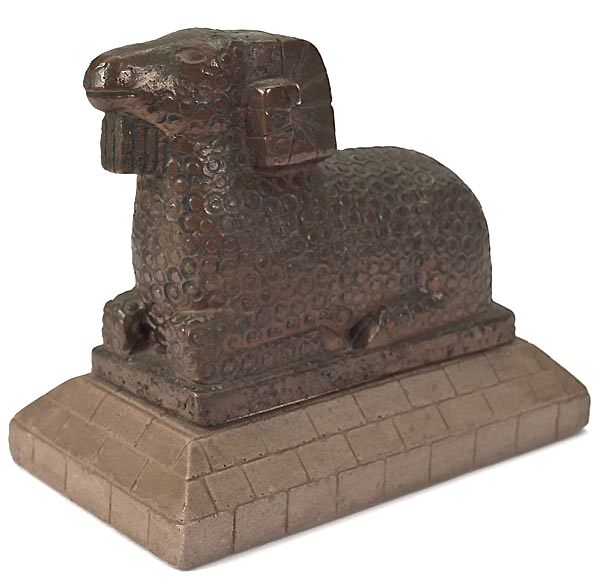Cleo Hartwig
Ram by Cleo Hartwig, Circa 1945
Cleo Hartwig was born in 1911 in Webberville, Michigan. Hartwig attended the School of the Art Institute of Chicago in Illinois from 1930-31, and received her BA in 1932 from Western Michigan University in Kalamazoo. In 1935 she spent her summer at the International School of Art in New York City, which enabled her to travel in Poland, Hungary, and Rumania. Hartwig also studied with noted sculptor Jose de Creeft in 1937 at the New School for Social Research in New York City.
Hartwig taught sculpture at public and private school systems, at Cooper Union in New York City, and at the Montclair Art Museum in New Jersey from 1945-71. In 1951, Hartwig married artist Vincent Glinsky, a founding member of the Sculptors Guild in Manhattan.
Hartwig was fascinated with the multifaceted forms of nature, which she persistently expressed through her work. Widely known for her stone carvings of plants and animal forms, Hartwig also explored abstractions and the human figure. Her artwork communicates her constant search for the biomorphic essence of natural forms. While her preferred media was stone, she frequently experimented with wood, bronze, clay, plaster and brass.
Hartwig was a director of the National Sculpture Society, a member of New York Society of Women Artists, the Sculptors Guild in New York City, and was elected to the National Academy of Design, first as an Associate and later as an Academician.
Hartwig has exhibited widely throughout Europe and the United States, won many prizes for her sculpture, and was awarded an Honorary Doctorate degree from her alma mater Western Michigan University in 1973. Her work can be found in the permanent collections of the nation’s finest museums. Hartwig died on June 18, 1988 in Manhattan, New York.
Her work process is best described in the article “The Compatibles: Sculptors Hartwig and Glinsky,” written by Enid Bell, published in the June 1968 issue of American Artist. “An exponent of direct carving, she does not refer to a pre-conceived three-dimensional model, and only occasionally makes preliminary sketches from life. The concept, derived from a memory image, evolves during contemplative consideration of the mass, formation decisions being reached in the unhurried process of reduction with bush hammers, chisels, and rasps. She prefers this equipment to power tools which, because of their mechanical impetus, are alien to contemplation, tending to propel the user into the fatality of doing too much too soon.”



 And many more
And many more